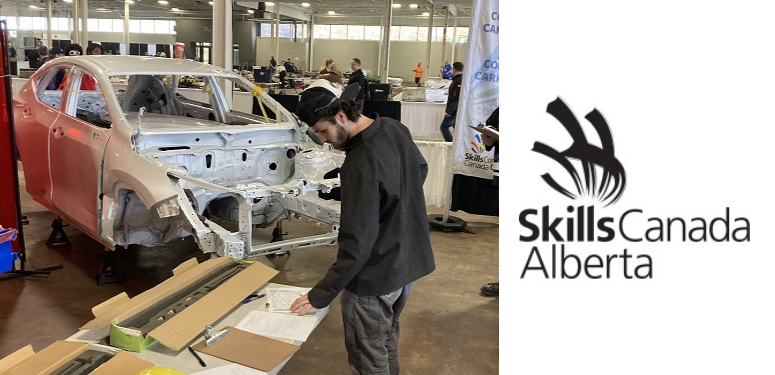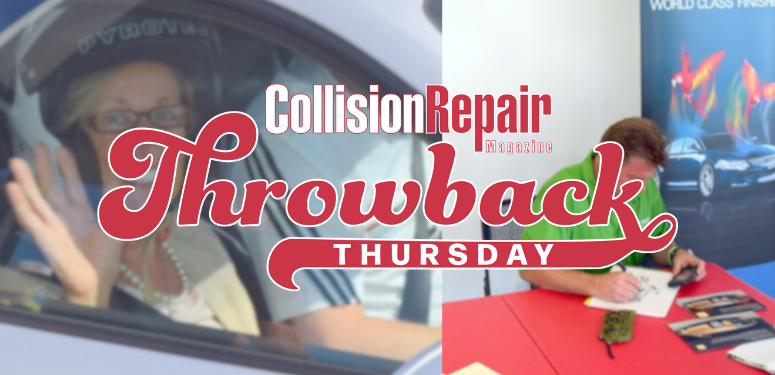By Jeff Sanford
Toronto, Ontario — April 16, 2018 — In this week’s AV Report: Taxi drivers demonstrate against ride share services, the AV regulatory conundrum, Sidewalk Labs announces a schedule for Quayside.
Taxi Cab Drivers Struggling
In New York this past week, taxi cab drivers took part in a macabre demonstration at city hall. The drivers placed four coffins at the foot of the steps of city hall. One by one, taxi drivers covered them with white flowers, before assembling on the steps and shouting for the city to “stop Uber’s greed” and “Stop making us slaves,” according to a report.
This was the second gathering in the past two months where taxi drivers fought back against what they describe as an attack on their economic lives. They largely blame the city officials that have allowed ride-share services to come into the city and gut the cab industry, say taxi drivers.
Taxi drivers at the protest claimed that the sudden increase in the number of for-hire vehicles on the city’s streets has made it impossible for drivers to earn a decent living. Indeed, some have been so affected by the changing nature of the industry that several drivers have taken their own lives. The four coffins in the protest symbolize four different drivers who have recently committed suicide as a result of a decline in the ability to provide a living wage for themselves or their family in the era of Lyft and Uber.
One of the recent deaths was that of Nicanor Ochisor, a 65-year-old yellow cab driver, who took his own life in his Queens home in March of this year. “According to his family and friends, he had been drowning financially as his prized taxi medallion, on which he had hoped to retire, plummeted in value [in the era of Uber],” according to the story. The report goes on to note that Ochisor’s death was, “Upsettingly familiar: In February, driver Douglas Schifter shot himself outside City Hall after posting a lengthy statement to Facebook blaming politicians for letting the streets get so saturated [with ride-share vehicles].
According to the New York Taxi Workers Alliance, a non-profit group that advocates for drivers, at least two other drivers have killed themselves since December in response to mounting financial pressures… At Wednesday’s rally, Bhairavi Desai, the executive director of NYTWA, described the situation as ‘a living nightmare.’” One of the drivers interviewed reminisced that it was only a couple years ago that a driver could work nine hours and easily make $200 in a day. In the era of Uber, yellow cab drivers are lucky if they can make $50 or $60 a day. As one of the drivers was quoted as saying, “We have guys at home who are losing their houses. I know cab drivers who are homeless today.”
Until recently, driving a cab in New York was a gateway to the middle class, especially if drivers could get their hands on a coveted medallion (a permit to operate their own cabs, rather than leasing cars from others). The number of medallions had been fixed, and so the price of each one rose, peaking in 2014 at over $1 million. Since then, however, the price of that coveted license has declined as city officials succumb to the entreaties of Uber and Lyft executives to allow the ride-share services to come into the market and undercut the cab industry. A similar situation is playing out in Toronto, where cab drivers have protested the appearance of ride sharing services. These services are still banned in B.C., but underground ride shares have proliferated there despite the ban. How bad has it become in New York? According to the report, “In January, seven medallions sold for under $200,000 each.” https://bit.ly/2GSN4GB
AVs to be more strictly regulated?
A flood of articles appeared this week discussing how AVs should be regulated. The recent death of a pedestrian struck by an AV has turned a spotlight on the issue of the regulation of AVs. Many are now realizing that these cars have appeared on the roads in a rather rapid fashion, partly as a result of an extremely “light touch” regulatory approach by governments, which have basically done the bidding of car and tech companions.
One of the articles that appeared this week notes that there needs to be a different approach to regulation of AVs than that which governs traditional autos. According to the report, this is partly because companies like Waymo, Cruise, and Uber, which will be deploying AVs, “…. are not planning to sell cars to the public. Instead, they’re planning to build driverless taxi services that customers will buy one ride at a time… This has big implications for the way regulators approach their jobs.”
It is also the case that, “Federal car regulations focus on ensuring that a car is safe at the moment it rolls off the assembly line. But as last month’s crash makes clear, the safety of a driverless taxi service depends on a lot more than just the physical features of the cars themselves… For example, dash cam footage from last month’s Uber crash showed the safety driver looking down at her lap for five agonizing seconds before the fatal crash. Should Uber have done more to train and supervise its safety drivers? Should Uber have continued to put two people in each car, rather than switching to a single driver? Not only are there no federal rules on these questions, at the time of the crash the public was completely in the dark about how Uber and its competitors were dealing with the issue.”
Considering this is technology that is only now being developed, there really is no perfectly comparable situation to consider. The Republican administration has a philosophical commitment to minimal regulation, and so the regulation has been light so far. Indeed, the U.S. Congress is currently considering legislation to exempt tens of thousands of self-driving cars from conventional car safety. That is, it seems regulation is about to become even lighter in touch. But according to many of the stories published this week, this is the wrong direction on regulations. Governments and industry need to figure out how these robot cars are to be assessed in terms of safety. As one of the reports put it, “… in exchange for this regulatory relief, Congress should insist on a lot more scrutiny for the testing and deployment of self-driving cars. Driverless car advocates worry, correctly, that premature regulation could hamper the development of this potentially life-saving technology. But officials could do a lot more to promote transparency and provide oversight without hampering progress.” Going on, the story notes that, “In the era of conventional cars, development and testing was generally conducted on private test tracks where they posed no danger to the public.” After the test, the car companies would provide the government with documentation that the car met the standards contained in a massive set of regulations known as the the Federal Motor Vehicle Safety Standards (FMVSS).
These regulations, developed over decades, “… establish detailed performance requirements for every safety-related part of a car: brakes, tires, headlights, mirrors, airbags, and a lot more… Before a car can be introduced into the market, the manufacturer must certify that the vehicle meets all of the requirements in the current version of the FMVSS. A carmaker must certify that the brakes can stop the car within a certain number of feet, that airbags can deploy safely with passengers of various heights, that the tires can run for many hours without overheating, and so forth.” But that approach doesn’t work for driverless cars, of course.
According to a report, “Companies can do some testing of driverless cars on a closed course, but it’s impossible to reproduce a full range of real-world situations in a private facility. So at some point, carmakers need to put self-driving cars on public roads for testing purposes—before a manufacturer is able to clearly demonstrate that they’re safe. In effect, this makes the public involuntary participants in a dangerous research project.”
AVs are only possible because of the adoption of an approach to programming known as ‘deep learning.’ In this approach the programs controlling the car actually learn over time how to negotiate unique situations.
This approach was adopted when it became clear that standard programming (creating a list of rules the car was to follow) would not work. When conventionally programmed AVs encountered unique situations they would often stop and sit still. Turns out there are too many unique situations in reality for a list of rules to work. Hence, the adoption of deep learning, which requires cars to get out on real roads in order to evolve their potential to be safe vehicles.
This creates a bit of a bind for those hoping to regulate AVs. According to a report, “So far, the approach favoured by most driverless car advocates has been for federal officials to simply throw up their hands at this problem.” The story goes on to note that, “… legislation passed by the House last September, and companion legislation currently stalled in the Senate, would carve out broad exemptions from the FMVSS for driverless cars… But what regulators could do is focus on transparency and oversight. If the public is going to share the road with potentially dangerous driverless cars, we should at least have timely and detailed information about how those vehicles are performing and what steps companies are taking to protect public safety.” https://bit.ly/2IHTMzu
Toronto to Smarten Up
Toronto residents have been following the advance of the Sidewalk Labs story that is currently unfolding in the city. The Google parent company, Alphabet, created the “urban innovation” company Sidewalk Labs in a bid to create a neighbourhood of the future with the intent of solving problems around congestion and the high cost of living.
To this end, Sidewalk Labs, “… hopes to break ground on its first ever smart-city project in Toronto in 2020, and begin testing some of the proposed technologies this summer,” its chief executive recently told Reuters. The backstory: A government agency known as Waterfront Toronto in March 2017 requested proposals to develop a 12-acre parcel of land that is the first part of the planned revitalization of about 800 acres of industrial wasteland to the east of the city’s downtown. The area is right next door to the downtown core; this is a prized bit of land about to be redeveloped. According to the Reuters report, “Sidewalk Labs was chosen in October based on a proposal that included autonomous vehicles, a ‘thermal grid’ that does not use fossil fuels, low-cost modular buildings with flexible uses, and robotic delivery and waste-management systems.
The company settled on Toronto after searching for sites across North America, Europe and Australia to create a smart city.” A schedule as to how it is this new neighbourhood will appear emerged this week. A development plan is expected to be approved by the Sidewalk and Waterfront Toronto boards by the end of 2018, and the first residents could move in as early as 2022 said the CEO of Sidewalk Labs, Dan Doctoroff, in an interview. “Quayside will be a prototype for a broader opportunity,” he was quoted as saying. Sidewalk has invested $50 million for testing and engagement this year. It will lease a new waterfront office in summer, where it will showcase some Quayside technologies, according to the Reuters report.
The story went on to suggest, “Sidewalk will have a better idea by year-end whether its partnership with Waterfront Toronto could extend to the broader eastern waterfront… Some technologies can be effective in Quayside’s limited area, but others including mobility, energy and building systems need larger economies of scale to be effective, Doctoroff said.” Sidewalk Labs has been approached by others to do similar projects elsewhere but is focused on Toronto for now, Doctoroff said. “We’ve got to get it right here,” according to Reuters. https://bit.ly/2ql0P9O





































